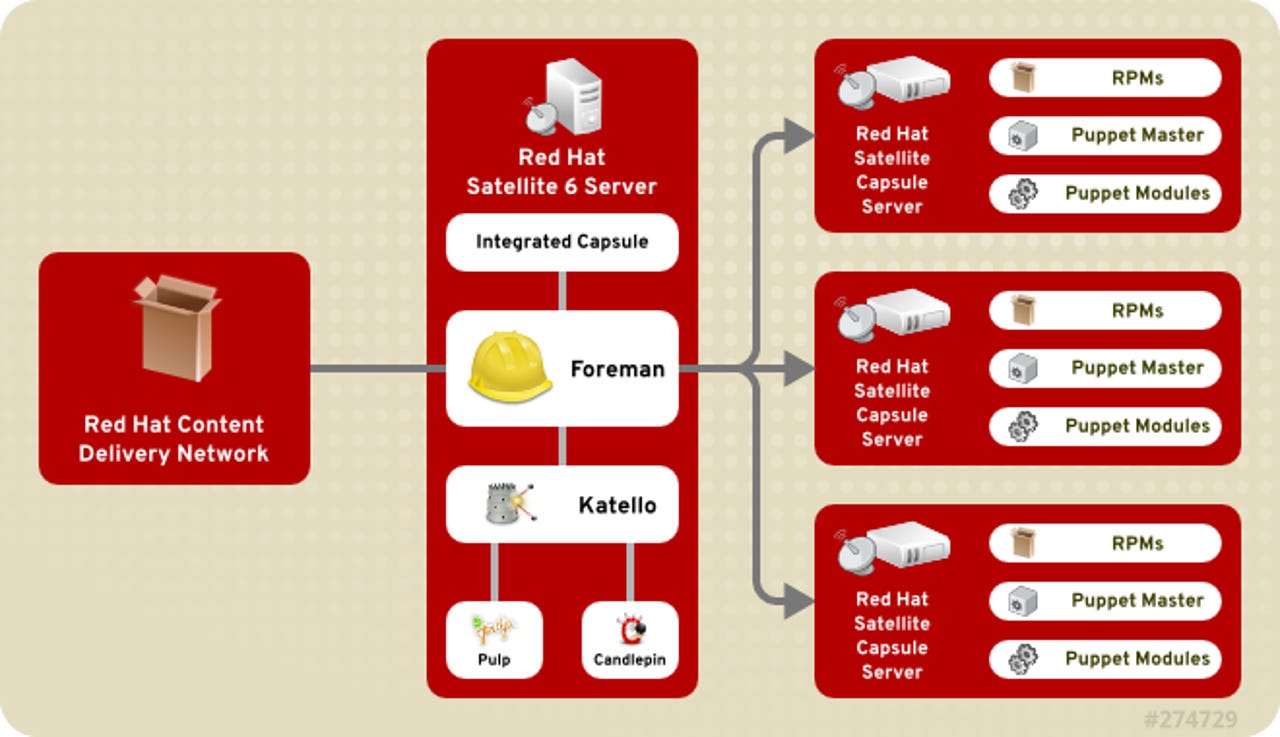Red Hat Satellite 6 comes with improved server and cloud management

There are many ways to manage Linux systems. Some people still swear by shell scripts with their fine control. Others like high-level tools such as cPanel that enable them to control servers with broad strokes. But, for Red Hat Enterprise Linux (RHEL) users, nothing beats Red Hat Satellite (RHS).

Red Hat server administrators are going to love RHS even more. As did predecessors, RHS 6 provides a complete life-cycle management of Red Hat systems with provisioning software distribution, patch and configuration management, along with subscription management across physical, virtual and cloud environments.
RHS 6 also adds the following new and improved features:
Bare-metal, Private and Public Cloud Provisioning: Provisioning bare metal systems, private cloud, and public clouds including providers such as Red Hat Enterprise Virtualization, OpenStack, VMWare, and Amazon EC2.
Puppet Forge and Git Integration: Features for synchronizing Puppet modules from repositories provide the ability to manage, promote, and distribute configuration easily across multiple environments.
Federated Cycle Management: RHS 6 now enables distribution and federation of provisioning, configuration and content delivery through Red Hat Satellite Capsule Servers.
Drift Remediation: RHS 6 can define system states and automatically correct system drift with a complete history, reporting, and auditing of changes.
System Discovery: Discover and search across non-provisioned hosts for quick deployment.
AR + VR
Red Hat claims that RHS 6 will offer a more simplified management approach with a single management console and methodology for managing the tools required to build, deploy, run and retire a system.
Besides managing RHEL, RHS can also be used to manage Red Hat's OpenStack Platform, Red Hat Enterprise Virtualization, Red Hat Storage, Red Hat Directory Server, Red Hat Certificate System, and OpenShift Enterprise, Red Hat's Platform-as-a-Service (PaaS) cloud offering.
The Raleigh, NC-based company also states that RHS 6 offers greater scalability, thanks to its new Red Hat Satellite Capsule server. This lets you facilitate software and configuration content federation and distribution by enabling you to manage servers locally instead of requiring centralized management with its internet traffic bottlenecks.
Although Red Hat doesn't make a big deal of it, what I found particularly interesting about RHS 6 is that it now incorporates the Puppet DevOps program. Red Hat uses Puppet for system configuration and I've found Puppet to be an excellent tool for both server and cloud deployments. In short, I think with this addition, Red Hat finally has an administration suite that's suitable for its OpenStack cloud ambitions
As Joe Fitzgerald, Red Hat's general manager of Cloud Management, said in a statement, "As IT environments evolve to support private, public and hybrid clouds, these environments are becoming more complex and increasingly difficult to manage. RHS 6 is a proven complement for both traditional and cloud infrastructures as it provides a highly scalable, unified solution focused on software life cycle and configuration management capabilities that span physical, virtual and cloud systems."
Want to see if it will meet your cloud needs? RHS 6 is currently available to all Red Hat Satellite customers.
Related Stories:
- Cisco, Red Hat broaden partnership, eye integrated OpenStack systems
- Red Hat looks to the OpenStack cloud with Red Hat Enterprise Virtualization 3.4
- Red Hat releases new version of OpenShift platform-as-a-service cloud
- Red Hat Enterprise Linux OpenStack Platform 4.0 is here
- A big step forward in business Linux: Red Hat Enterprise Linux 7 arrives